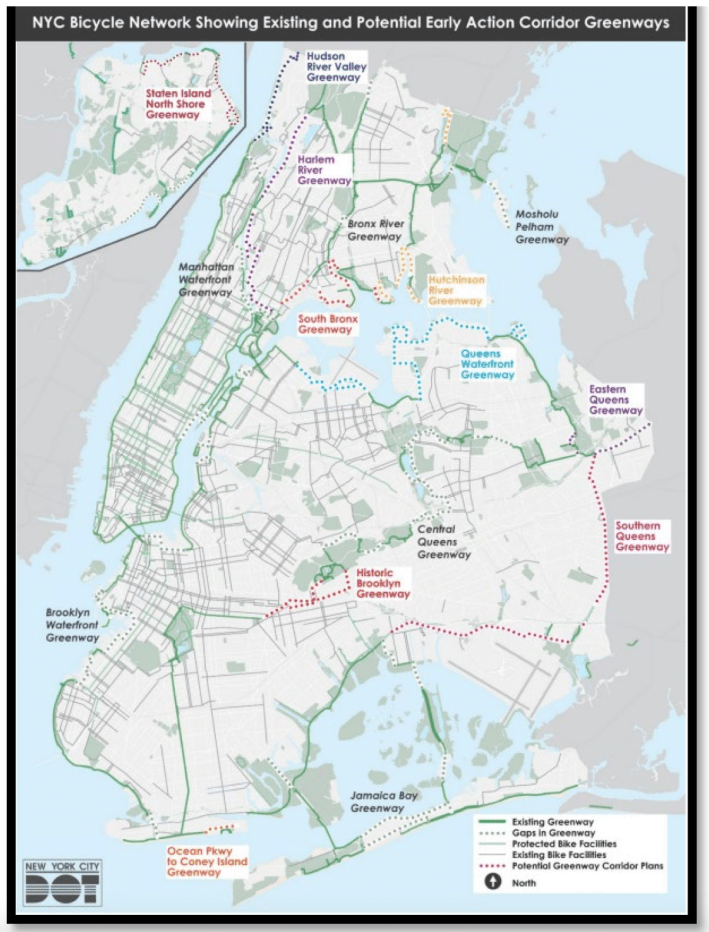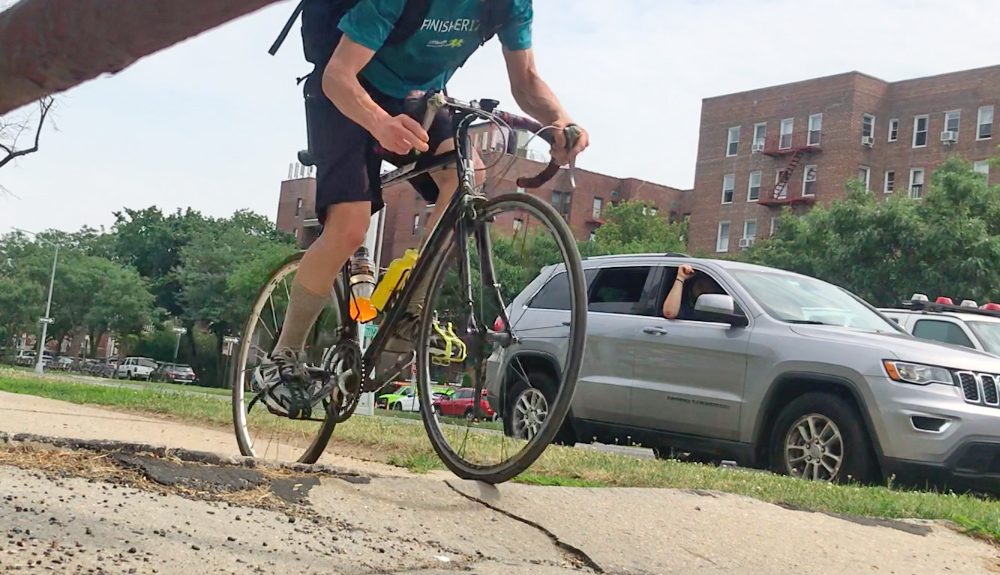Lots of greenways, but where's the green?
Mayor Adams says he'll build 40 miles of new cyclist-friendly greenways — some freestanding, some joining existing paths into a wider network — but he didn't say how he'll pay for it, where exactly they'll be, or when they'll be done, which raised some concerns, given that his administration is already far behind on its existing bike lane requirements.

The release of a map (right) of five new greenways follows the announcement last August that the city had won a $7.25-million federal grant to plan the expansion. That planning process will now launch, city officials said.
The new paths include:
- 10 new miles in northern Queens (to connect six miles of existing greenway)
- a new two-mile stretch in Brooklyn connecting Eastern Parkway to Highland Park
- an entirely new 10-mile route on the north shore of Staten Island
- 12.5 new miles in the South Bronx (connecting to 2.5 miles of existing but far-flung greenways)
- a new seven-mile stretch in southern Queens that will connect to the existing Jamaica Bay Greenway.
Also on the map presented on Thursday was a previously announced Harlem River Greenway, which is in the earliest phase as well.
Greenways can be easier to build than protected bike lanes because they are often through existing parks and don't always require eliminating travel lanes or parking. In his opening remarks at a presser on Thursday, the mayor alluded to the challenges he's had building protected bike lanes and dedicated bus lanes — several of which have faced some community opposition. He is far behind on his requirement to build 50 miles of protected bike lanes and 30 miles of dedicated bus lanes this year.
"You can't force feed this on community residents. It's about conversation, it's about engagement, it's about introducing people to the new infrastructure," he said.
The mayor mentioned community engagement or community planning 16 times in his opening comments and subsequent on-topic media questions.
About the specific locations of the greenway routes, the mayor added, "The exact street routes will be identified through a community engagement and planning process. I cannot emphasize this enough. That is one of the top complaints we received. people did not feel as though they were engaged."
The mayor even thanked Southern Brooklyn Assembly Member Michael Novakhov who said he was concerned about the initiative. "We all understand the importance of greenways [but] I think it's very important to understand that we have a million of car drivers as well," he said. "The problem is, in my district, my constituents are complaining a lot that the roads are getting narrow because of the new [bike] lanes. ... I have some concerns about the drivers of the regular cars. I mean, it's still New York City, it's still millions of cars and millions of drivers."
True advocates for cycling and for greenspace were obviously excited by the announcement that more was coming, but were also deeply concerned about the challenges ahead, given the mayor and Novakhov's comments, and how poorly the city currently maintains its existing 150 miles of greenways, such as the root-riven Ocean Parkway and other damaged routes.
"I hope the city will commit what's necessary to maintain these and be more ambitious and investing in this important infrastructure," Hunter Armstrong, executive director of the Brooklyn Greenway Initiative.

Another greenway insider pointed out that the city's $7.25-million federal RAISE grant was far more ambitious than what was announced on Thursday. For instance, the award notification from the feds [see page 99] mentioned that the city would not only result in an "early action corridor plan," which is what was apparently announced on Thursday, but also "Future Action corridor plans, and a greenways vision plan." Neither of those two are announced on Thursday.
Another greenways booster, Jon Orcutt of Bike New York, added that it's premature to worry about all the details.
"Think 'next decade' not 'next year' as the way to assess this news," he said.
Streetsblog reached out to City Hall after the announcement to find out the timeline, the price tag, and why there was such a big difference between the RAISE grant map and the map released on Thursday, but City Hall did not respond.






